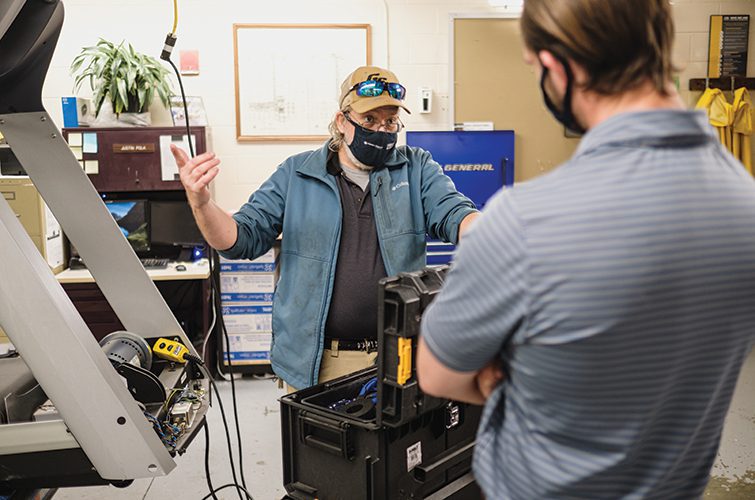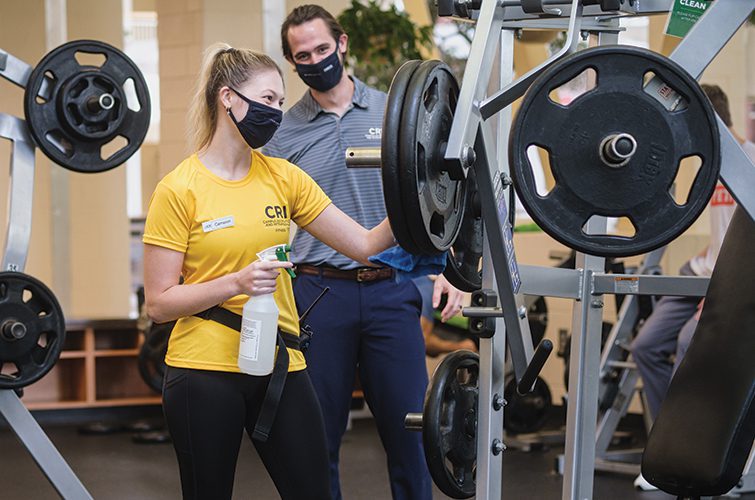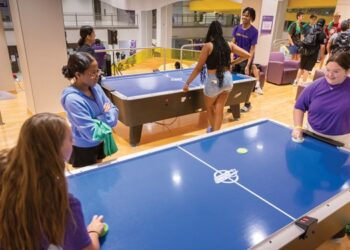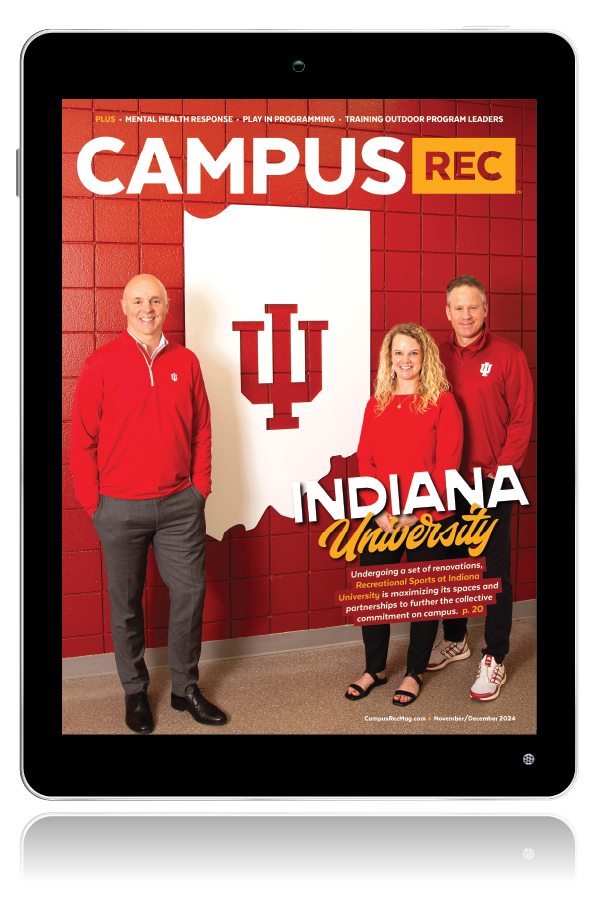Equipment cleaning practices took on a new form in 2020 as rec centers focused on cleaning and safety for patrons to return.
With a new year upon the recreation industry, these key aspects aren’t going anywhere. Below, two schools share their best cleanliness practices when it comes to making sure fitness equipment is safe for patrons to use.
Best Equipment Cleaning Practices
Georgia Southern
At Georgia Southern, sanitization and cleaning training is almost entirely hands-on. During training, staff are broken into smaller groups and spend roughly 30 minutes in each of the three areas of the Fitness Center: machine weights, free weights and the cardio deck. Next, staff are shown how to properly clean one to two pieces of equipment as a representation of the rest of the pieces in that area.
“We make sure to educate staff on how cleanliness plays into the longevity of our equipment, as well as how it reduces the risk of bacteria transmission,” said Keagan Kiely, the fitness program director at Georgia Southern. “The cleaning of each piece of equipment is ensured through a checklist used on shift and through weekly equipment walkthroughs done by the fitness director, graduate assistant and fitness maintenance technician.”
Top Practices
Let disinfectant sit for the designated kill time: Especially during COVID, Kiely recommended spraying all touch points and allowing disinfectant to sit for the designated kill time to make sure equipment is effectively sanitized.
Oil guide rods, clean pulley systems and vacuum inside of cardio equipment: “Maintaining the inner workings of equipment does not only help the longevity of equipment, but also ensures the piece of equipment will work properly with no safety concerns,” said Kiely.
Cleaning days: Every four to six weeks, staff have a much more in-depth cleaning process. During these four-hour in-services, equipment is moved to vacuum and mop areas that can’t get attention during open hours due to participation. The team dusts air vents, cleanses light fixtures, polishes stainless steel, deep cleans treadmill decks, etc.

Baylor University
At Baylor, student team leaders are selected to lead shifts and ensure a staff member is in each area of the facility to maintain cleanliness and safety. These leaders are responsible for rotating staff to different areas to sanitize, and to monitor the front desk to greet patrons and remind of key policies. Every staff member is also assigned three to four machines to detail a few times a week.
As new staff members are hired, they attend an orientation and start on a shadow shift with a team leader to receive instruction, learn how to use equipment and understand how a shift should operate.
“They are taught all of our processes and are shown what proper disinfecting and detailing looks like,” said Caleb Damron, the assistant director of facilities and operations at Baylor. “For those who are hired at the beginning of a semester, we have a larger team orientation where we walk through all of our processes and teach how to use every piece of equipment properly so they are prepared to teach patrons, if necessary.”
Top Practices
Stop and Go flip cards: “Stop” means do not use and alert a fitness team member the machine needs to be disinfected — instructions are on the card. “Go” means the machine has been disinfected and is ready for use.
Electrostatic sprayer: Every evening all equipment is sanitized with an electrostatic sprayer and the floors are scrubbed. Because team members wipe down equipment immediately after use, an electrostatic sprayer is used at the end of the day as a precautionary measure.
Air control: Damron said they’ve also taken measures to purify the air by adjusting the A/C controls to bring outside air into the building while exhausting out the interior air. Six large purifiers have also been placed with two at each of the three different exercise areas.
Both Kiely and Damron agree organization and preventative equipment cleaning practices are the best way to ensure cleanliness and patron safety. Even more so, going above and beyond is all in the details and teamwork.
“We teach our staff the difference between disinfecting and detailing, such as wiping every inch of a machine to remove dust, dirt and scuff marks,” said Damon. “We tell them every team member helps disinfect all equipment, particularly the high touch points, and details their specific machines once per shift.”











